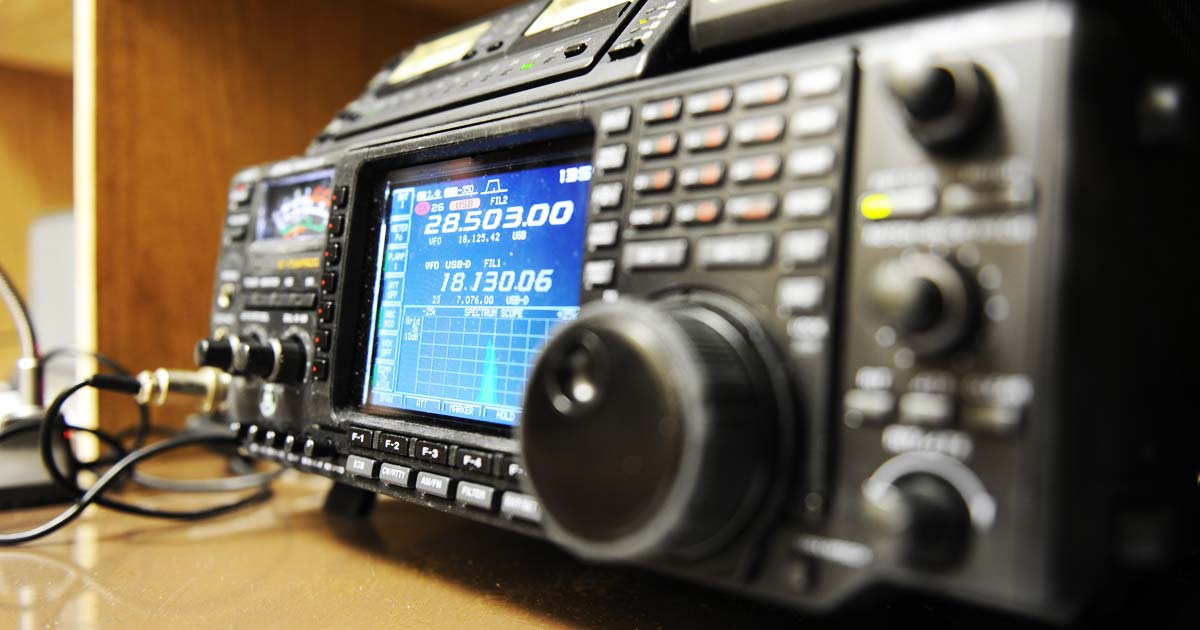
I received my first Ham radio license when I was about 10 years old; the old-timers in the room thought it was pretty amusing to see some young kid coming in to take the tests.
I guess I wasn’t your ordinary ten-year-old kid, even back then I was into survival. I would order Cabelas’ catalogs and fishing magazines, making sure to circle all the gear that I needed to make my great getaway into the wild!
While I never trekked off and escaped into the wilderness, well, not at that age, HAM radio allowed me to take all sorts of wild adventures around the world. I stayed up until the wee hours of the night, using my Grandfather’s radios to talk to and listen to people from around the globe. It was amazing to be able to pick up the mic and talk to someone on the other side of the world.
This may not seem like a big deal to today’s generation who grew up with the internet and iPhones, but when it comes to preparedness Ham Radio is still very relevant and something I would argue is a skill every preparedness-minded person needs to learn.
Why Become a Ham Radio Operator?
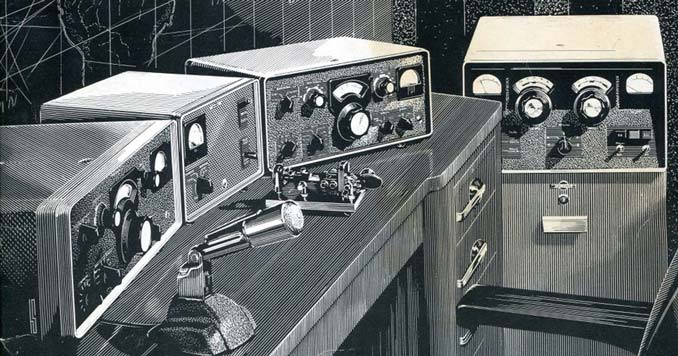
When it comes to Survival Communications, Amateur Radio (known affectionally as Ham Radio) is the way to go. It has a number of real-world survival advantages over cell phones, the internet, CB, GMRS, FRS, and other radios or forms of communication.
To begin with, the knowledge that you will gain as a licensed ham radio operator will allow you to listen to and communicate with people throughout the world. While that might not sound important as you are starting at this article on the internet, during a disaster situation where the internet goes down and all other forms of communication fail, do you have a plan for gathering relevant survival-related information or making contact with those in your group or family?
In a survival situation, knowledge is a very valuable asset. The ability to know what’s going on around you will be extremely important in just about any survival situation you might find yourself in. Having this knowledge will definitely give you a leg up in a survival situation.
With little power, and a minimal amount of equipment, Ham Radio allows you to communicate with other Hams, receive radio broadcasts from around the world, and gather important intel during times of crisis – even when cell towers and other forms of communication have failed.
In an emergency situation, you will be able to stay informed on what’s going on locally, nationally, and worldwide. Even in today’s modern age of high-tech gadgets, cell phones, and email, when the grid goes down it’s often HAM Radio operators who still provide emergency communications until things return to normal.
During almost every major disaster, local officials rely heavily on Hams to coordinate rescues and organize search and rescue missions throughout the affected areas. In fact, when regular communications systems like cellular networks, Internet access points, and public safety radio systems are compromised, ham radio can act as a substitute until normal communications have been repaired.
The FCC allows Hams to assist agencies like FEMA, the National Weather Service, and the military during times of crisis. Their ability to communicate when the grid goes down is one of the major reasons I advise our readers to look into Ham Radio.
Requirements to become a Ham Radio Operator:
Unlike when I got my license, The FCC’s new licensing requirements have been simplified and now only require you to pass a single 35-question written exam; no Morse code required (although I do advise you learn it, as it has a number of advantages in an emergency situation).
The tests are made up of questions relating to things like standard operating procedures, identifying radio frequencies, understanding radio propagation, electronic circuits, and electrical principles, antenna theory, equipment repair, non-voice communications, and emergency preparedness.
Why you need to be Licensed:
I often have people ask me if they really need to go through the hassle of becoming a licensed Amateur Radio Operator. Some people argue that during a SHTF situation having a License is meaningless. While this may be true, the knowledge that you’ll obtain while studying to get your license is well worth the time and the effort.
You will learn things like the:
- The basics of how to operate your radio
- Which bands are open during different atmospheric conditions
- How to reliably use your radio during an emergency
- How to build a variety of basic antennas.
In my opinion, studying for the test and going through the process is the only way to ensure you’ll be able to use these skills when it counts. You will be far better off learning these critical skills now instead of haphazardly trying to figure how to use your radio during an emergency situation.
If you are serious about survival communication, I strongly suggest that you look into becoming a Ham Radio Operator.
Licensing Study Guides and Material
- Ham Radio For Dummies
- The ARRL Antenna Book: The Ultimate Reference for Amateur Radio Antennas
- ARRL Ham Radio License Manual
Other Important Ham Radio Resources:
- Communications Monitoring: The Importance of Radio Monitoring and Intelligence Gathering During Crisis Situations
- Ham Radio FAQs: Everything you need to know about Amateur Radio
- Emergency Communication: Frequencies to Monitor when Things Go Bad
- The ARRL Antenna Book: The Ultimate Reference for Amateur Radio Antennas
- The ARRL Ham Radio License Manual
- Morse Code Teacher
What Ham Radio Gear do you need to ensure your ability to communicate during a disaster?
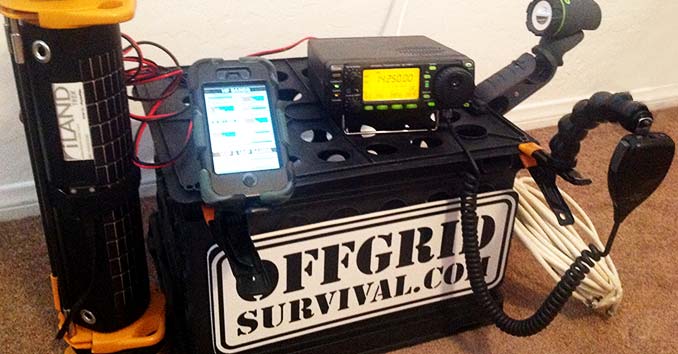
Once you have your license, you are going to need a couple of things to help ensure your ability to communicate:
- Radios – A VHF/UHF band Radio for Local Coms (Can also be used with linked repeaters for state and regional Coms) and an HF (High Frequency) Radio for local, nationwide and worldwide communications.
- A Power Supply – We suggest having a power supply for your base station, a mobile vehicle setup and some solar/battery setups for bugout situation or field communications.
- Antennas – This is a huge topic in and of itself but all of your radios are going to need antennas and it’s a good idea to learn as much as you can about Antenna Theory and building your own antennas.
Recommended Ham Radios – VHF/UHF band Radios and a Good HF (High Frequency) Radio
Let’s start out with covering our local and statewide coms because when it comes down to the reality of survival communications most disasters that you will face will be local in nature and the ability to get updates on what’s going down in your neck of the woods is going to play a vital role in your ability to survive.
VHF/UHF Band Radios
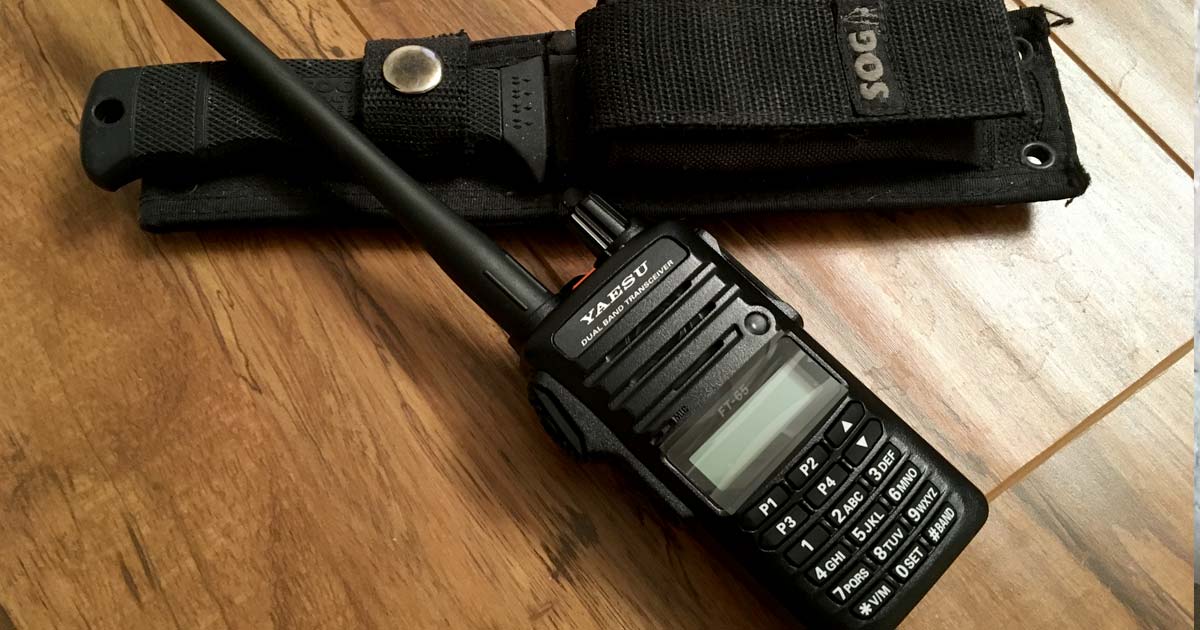
The first thing you want to do is make sure you have a radio that covers the 2-meter band and 70CM ham bands, these types of radios will usually cover 136-174 MHz & 400-480 MHz FM, where you can find everything from local fire and police, weather radio, and of course the ham bands and repeater networks that you will utilize to communicate locally or regionally through repeater networks that are linked to other areas of the country.
Here are a couple of Dual Band Radios that we like:
- The Yaesu FT-60: This is probably the #1 most recommended radio by Hams. The thing is rock solid dependable and it’s going to be hard to find a better handheld dual-band radio.
- The Yaesu FT-65: While not as good as the FT-60, this radio still rocks and it’s going to be a good option for those watching their budget. You can read our full review on this radio here.
- BaoFeng UV-5R: I thought long and hard on whether or not to include this radio — if you look at my reviews and other articles on this site you know I am not a fan of this radio. That being said they are cheap as hell, they allow you to send on more than just ham bands, and if you’re really broke then they are better than nothing – but I would not trust my life with one!
- Yaesu FT-2980R Mobile Rig: For a vehicle setup or a home base station, the FT-2980R is going to give you a hell of a lot more power than a hand-held rig and is something we recommend having both at home and in your vehicle.
HF (High Frequency) Radio
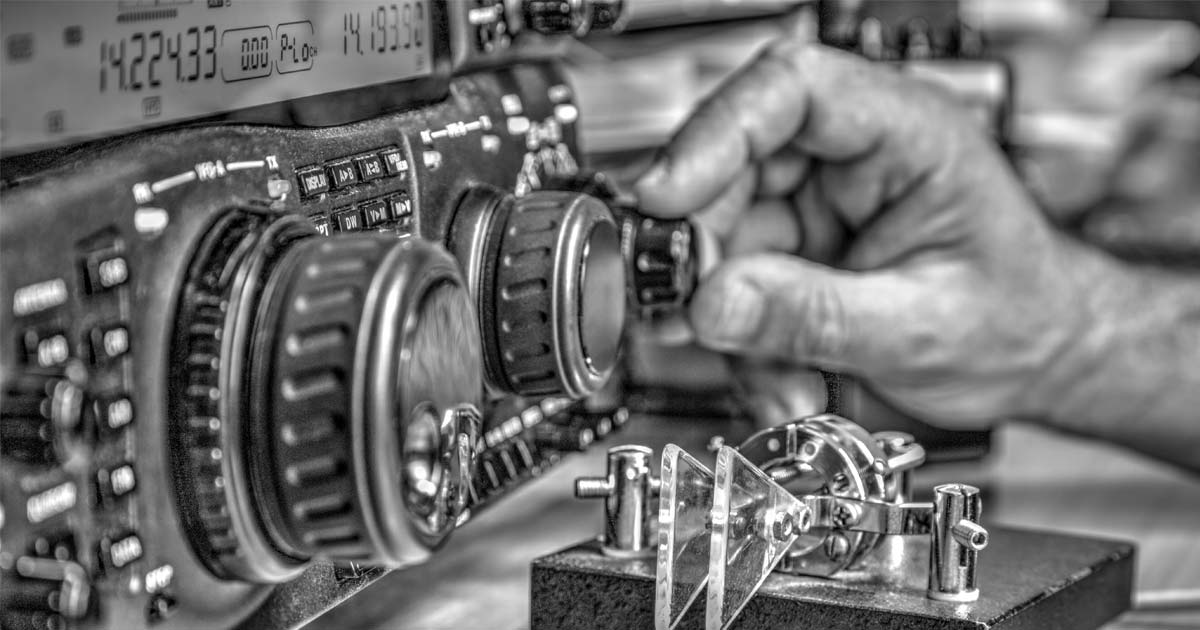
Now we want to start looking at being able to gather intel from around the world; that’s why we think every good Emergency Communication setup needs to include an HF (High Frequency) Radio – preferable something that covers 6-180 meters. Here you will not only find a number of Ham Bands that will allow you to send and receive information locally, nationwide and worldwide, but you will also find worldwide shortwave broadcasts, military and government stations, and a huge range of emergency broadcasts systems.
Here are a couple of HF Radios that we like:
- ICOM IC-7300: This radio does everything and then some! It’s a great 100W base station with a built-in antenna tuner that receives from 0.030 to 74.800 MHZ. It operates on SSB, CW, RTTY, AM and FM modes.
- ICOM IC-718 – For those who are on a budget, the Icom IC-718 is a good compromise.
- FT891 Yaesu – If you are looking for a small HF Rig that can be used either as a base station or a mobile rig then we recommend taking a look at the FT891.
For more detailed information on HAM Radio and Emergency Communications check out our other site hamradioprepper.com or read our article on The Importance of Radio Monitoring and Intelligence Gathering During Crisis Situations
For more information on Ham Radio and Emergency Communication, check out these articles:
- Prepper Radio: The No-BS Ham Radio Technician Exam Prep Guide
Your Key to Passing the Amateur Radio Technician License Test and Taking Your Emergency Communication Skills to the Next Level - Emergency Communications When TSHTF
- Ham Radio Cheat Sheet
- Situational Intel: Knowledge is Power during a Crisis
- Ham Radio FAQs
- The ¼ Wave Droopy Ground Plane 2 Meter Antenna




I don’t know much about the system. How much money will I need to invest to get started?
Jim, if you want a base/mobile set up and go with Yaesu Ft891, You will need a good antenna (I have Yaesu Atas120a) which can provide for both base and mobile co.ms. you will need a power supply (converts house current AC to DC current (13.8 volts and 23amps) needed for equipment. If you go with Yaesu, and the atas120a antenna, Yaesu also has a automatic “antenna tuner”
That works with the radio and antenna. Good headset and microphone and all requiuredby coaxial cables and proper connectors. Grounding clamp and copper wiring also is a must. My rig cost approximately $1,900. You can go to any online retailer of HAM Equipment and they will assist you in setting you on the right path. Good luck.
You can get some pretty decent used mobile gear for around $300.
What would be a good HF rig (I’ve got a Siltronix 1011D I’m refurbishing). I’ve got a 2 meter rig on the way, but I think that HF would be better for survival.
I’m not encouraging cheating, but there are practice tests online that are almost word for word of that on the actual test. There are about 100 regular questions that they pick the 35 for the test. If you find several practice tests you could have all the possible questions covered.
@Jim, it’s not considered cheating. They post the pool of questions used on each test on various websites and in books. For example there is a pool of 394 questions. Only 35 of these questions will be on a test. It makes it very, very easy to get your license these days!
Im not going to worry about a license. I bought a hamm transceiver and listen all the time but when the SHTF, I will be using it to find other survivors and set up plans, etc.
Yaesu FT-817ND is perfect for backpacking HF/VHF work. While it only puts out 5 watts, it can by just about any 12 volt power source you can come up with. Add on a PackerAmp for it and you can be putting out enough power to work the world. Imagine a small 12v gelcell charged with a small solar panel in your backpack.
Want digital modes? Pick up a used IPaq on Ebay and load up PocketDigi on it. You’ll be on PSK31 in no time at all.
What do you think about finding an old HAM radio that runs on vacuum tubes in the event of an EMP strike? I know it is far-fetched and unlikely, but hey, this is a survival site rite? Do they even still make them?
they would use a lot more power (which could also be at a premium) + repair/replacement tubes would be an issue.
It would be cheaper, quicker, and easier to buy a modern unit and put it in a faraday cage. Think sealed metal can, insulated with cardboard between the can and the electronic inside.
for how much they cost and how easy to operate, there is no excuse to at least have a ham radio stored away somewhere
Regarding an old ham radio that runs on vacuum tubes. Good idea, but good luck finding new tubes. They don’t make new tubes anymore so you have to make sure you find some that someone just stored in a garage or closet.
I would just recommend you find a good inexpensive modern radio, and just don’t turn it on. Just keep it stored in a closet or basement. Well honestly I wouldn’t worry about storing it….use the darn thing.
Not true…
Actually, vacuum tubes are easy to come by. They are still manufactured in russia and other places and you can easily find surplus tubes on ebay. Just have a few spares but remember that unlike most modern junk, tubes can last 50-60 years before replacement. And, unlike modern radio sets, vintage gear can actually be repaired by almost anyone. Try finding someone to repair a modern radio or even find parts for it after a major societal breakdown. Good luck.
Also, tube gear is almost impervious to EMP.
As for cost, you can find decent vintage hf gear for under 300.
Find a nice Heathkit and you will have access to abundent manuals and repair documents that are understandable by anyone.
You can find a 6 meter transceiver for under a hundred sometimes but the band can be flaky. Not a horible way to start out though, and you’ll learn a lot.
I like your answer! ALSO, most of these modern radios have processors MADE IN CHINA AND OVERSEAS! If in a conflict, parts will be unavailable fast. Contrary to most replies, power ALL radios at least one a year for 24 hours simply idling. It keeps the radio’s capacitors from drying out.
Also, a decent faraday cage is a microwave oven (broken junk!) With the cord cut flush.
Actually in the event of an EMP attack depending on your distance from the center and fallout area(not correct term but because of Earth’s gravitational field the effect would be not a pure cone from center but extend more eliptical south(or north if living in southern hemisphere) of the center) even things turned off could still react to an EMP without proper shielding. Transformers which as far as I know are a required part for any type of radio equipment could pick up off the electromagnetic radiation. Thats the biggest reason why EMP attacks are so deadly all those gray cylinders hanging on the poles all across town near your houses are transformers imagine all those burning out, some catching on fire even, and the time it would take to replace every effected transformer to restore power after the SHTF. As for proper shielding because we don’t know enough it will mostly be luck, look up faraday cages and go from there though.
Faraday Cage the easy way.
I bought a new 20 gal metal trash can.
I wrapped the inside of the can and the lid with cardboard so the contents would not contact the outside of the can. That would be bad.
I dropped in all my electronic gear and installed the lid.
The EMP comes in three waves but it is too fast to walk over and stop once created.
My cost was the can, $25. the cardboard, free, some tape, ? and my time.
where can I can a license for a ham radio?
Mieves, and everyone else interested, Look up via google “ham radio club” and your closest major city name, also try Amateur radio club, amateur radio repeater, repeater club, and so forth as well as ARRL and you will find local radio clubs that sponsor the testing in your area.
73
@Meives,
I hope, by now, you have your amateur radio license.
Finding a local club is easy at http://www.arrl.org and click the clubs tab. http://www.arrl.org/find-a-club lets you search near your zip code.
Many clubs offer classes and provide the test session you will need afterward.
I hope this helps.
You can get a good used radio on e-bay, but you need to read the info they post with it. lots of radios are for parts only.
So, if all hell breaks loose and the grid breaks down, why do you even need a license?
It’s simple Gloria,
You don’t need a license to operate ANY radio (ham, police, commercial, ect.) in an emergency. To get a license you must learn the basics of how to operate your radio. After getting your license you can get actual experience communicating with others. You learn which frequency bands are open during different atmospheric conditions. It’s a lot better to acquire these skills in the comfort of your own home than to try to use your radio in an emergency only to find you don’t know how to tone a repeater, or program a DTMF sequence to get a phone patch to 911, or even know what frequencies others will be on. It’s not rocket science, but it isn’t as simple as using a phone.
The type of radios most people are familiar with such as police, fire, aircraft, marine VHF, CB and FRS/GMRS are very simple to operate. You control the volume, squelch and channel. They are designed for simplicity, not versatility. Most ham radios are just the opposite.
If you want more than 50mi-75mi RELIABLE range, you need a High Frequency Single SideBand (HF/SSB) radio. These call for more skill than the VHF/UHF FM.
The FCC amateur radio operators license is the most practical route to learning how to use the single most valuable emergency commo system in the world.
PLEASE don’t forget the antennas! No matter how much you spend on a radio, with a junk antenna you won’t be hearing or talking to anyone! BUT a so so radio and a great antenna and you will be in MUCH better shape. I bought an antenna for a radio from DR-DIPOLE.COM (inexpensive and portable) and took it to our camper to try. Down in between hills! It worked GREAT! They are about 1 lb and really easy to use and put up and take down! Worth a look. But whatever antenna you decide to use, make sure it is a good one! Verticals will get you more local traffic while horizontals gets much more distance. Good luck!
Hello, I am looking for a good Ham Radio that is High frequency that runs on batteries with an alternate power source being car lighter or plug in. I am looking to get one that will operate great in a mountainous environment. I will be purchasing a 10″ copper coiled portable Antenna along with it.
Is it possible to create a ham radio setup that is private, so that we can communicate just among our family members if we so wish? If “yes”, then could you point me in the direction of how to do it? Thanks!
Is it possible to create a ham radio setup that is private, so that we can communicate just among our family members ( 3 persons) if we so wish? If “yes”, then could you point me in the direction of how to do it? Thanks!
The FCC rules and regulations specifically prohibit private, scrambled or ciphered communications on the Amateur radio bands.
I’ve realized I need info about Hamm radios for emergency preparedness
I’m looking to get my father in law a used cb/ham radio so he can talk to his friends and family in Portugal. He currently lives in Massachusetts. Is this even possible?! Thanks.